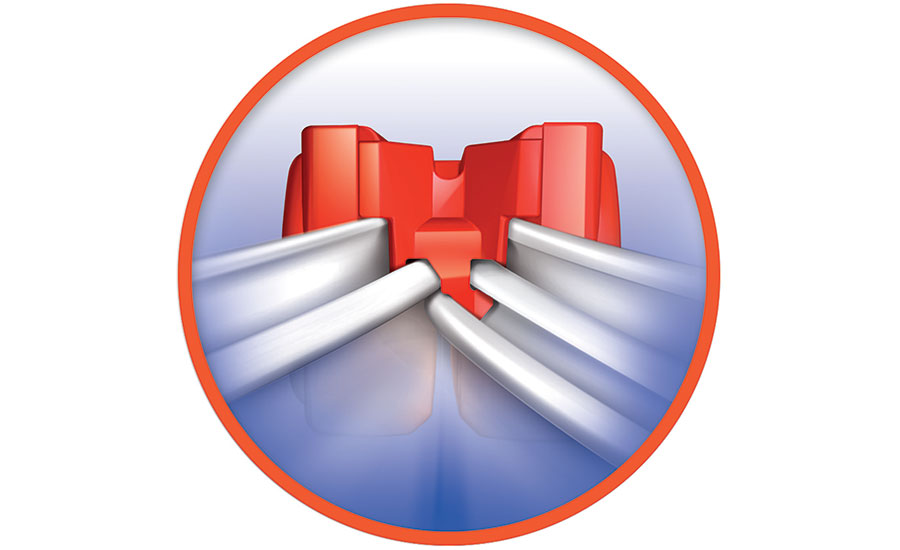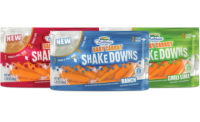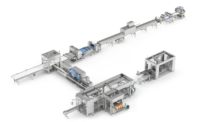With this fast-growing segment expected to climb 7-9 percent per year through 2023, navigating the shift from rigid to flexible packaging with optimal pouch functionality challenges brand managers with various considerations when determining an overall package experience.
Closures are not all designed to perform the same; it’s not a one-size-fits-all selection process. A package closure is one of the first and most crucial points of interaction that consumers have with a brand’s product. A well-designed package considers the consumer experience and interaction with the product.
For this reason, it’s important to avoid the trap of “box checking” or deferring the closure choice. Closures should be selected based on the best “fit for use” of the package and provide an optimal consumer experience. Whether your package is competing based on premium offerings or price alone, ensure your reclosability selection matches what your brand is trying to accomplish overall.
Create memorable, functional and value-added packages for consumers by keeping foundational aspects such as package size, product type, end user and price point in mind throughout the design process.
Selecting a Closure Based on Package Size
The way consumers shop has shifted away from shopping solely at traditional grocery stores. Club stores, convenience stores (C-stores) and online options add complexity to this space, creating challenges and opportunities for product packaging.
With the rise of bulk purchases, consumers prefer products that won’t spoil or go stale before they finish consuming them. For bulk or large-size packages, look for zippers or sliders that can provide reliability throughout the package life requirements, while offering the added benefits of product containment and consumer convenience.
Consumers who are looking for a quick shopping trip head to C-stores for on-the-go snacks or a convenient spot to buy items in little time. This shopping experience lends itself to small format, multi-serve packages. They fit nicely on-shelf, while providing a portable option. Until recently, small format packages could only be reclosed using a press-to-close zipper. However, new innovations allow for commercial small-format slider systems designed to fit a smaller package size.
On the other end of the spectrum, online shopping is requiring brands to restrategize. This year alone, U.S. e-Commerce sales are predicted to increase 16 percent, to $525.1 billion. As packages are designed for this channel, the focus will not be centered on branding or shelf presence as much as factors like product protection, containment and sustainability.
Ensuring the product is intact during the final moment of truth – the period in which a consumer opens the package they’ve been waiting for and sees their ordered item—is as important as the quality of the product itself.
When a package breaks down in distribution, it’s not the only thing that is damaged. The consumer perception of the product is in jeopardy. Plus, the seller or the brand is charged for the product. On top of that, the environment takes a toll. The carbon footprint used in the return, repair or replacement, and reshipping of the product increases exponentially.

Designing with the age in mind creates personalized opportunities in a world where consumers expect things to be tailored to them.
Selecting a Closure Based on End User
We live in a world where today’s consumers expect things to be tailored to them. Designing packages with the end-user’s age in mind creates personalized opportunities, especially since more than 60 percent of consumers indicate that resealability is one of the most important packaging attributes.
During the final moment of truth when the consumer is opening your package, are they delighted by the experience or frustrated that they can’t get to the product? Designing your entire package for the end user can improve the overall brand experience and produce loyal, return customers.
As the population continues to age, brands may find that their average product user tends to skew older. This target audience may have a difficult time pressing a zipper closed or gripping a small slider. Because of the unique consumer requirements, an ergonomic slider that is easy to grasp would be the ideal match.
For young children, child resistance may be a packaging necessity. As products that were once in child-resistant rigid packaging move into flexible types, brands can benefit from new and safe packaging options. Interest continues to grow for reclosable pouches with child-resistant sliders in markets for products such as pool chemical, lawn and garden care, and even cannabis.
Budget- or food waste-conscious shoppers trying to keep their food fresher longer while minimizing their waste output are also looking for solutions. By some estimates, as much as 40 percent of food produced is never eaten. Closures provide product containment and slow the degradation process. This results in better overall package performance, longer shelf life, and a consequential reduction in waste.
As brands, it’s not only important to think of the consumer, but to think bigger picture as well. When food is thrown out, it’s not just that product that’s wasted—it’s also the energy that went into producing the product, from growing it to packaging and transport. Providing responsible solutions that keep food fresher for a longer period can support consumers and the environment.
Selecting a Closure Based on Product Type
When a consumer purchases a product, they expect the package to perform and function the way it’s intended. This includes packaging that tears properly, closures open and close smoothly, and products that last for as long as projected. Different types of ingredients and products can affect the way a package closure performs.
Granular products, frozen applications, and viscous or oily ingredients are all examples of products that require specific solutions to meet a closure’s performance and consumer expectations.
More recently, flexible packaging has taken off in the baking aisle. Because these types of products are typically granular, specific sliders have been developed to plow through the particles and clear the track, ensuring the package is sealed reliably to prevent spillage.
Another example of product-specific closure solutions can be found in the frozen aisle. Often, consumers express frustrations of packages popping open while in the freezer. This happens specifically with closures that aren’t designed to handle extreme temperatures. Zippers with double locks hold up better to freezing temperatures and offer twice the protection. This provides assurance that the seal is secure, keeping consumers satisfied and happy.

Plowing sliders remove fine particles, providing a reliable closing.
Selecting a Closure with Price Point in Mind
Consumers now expect reclosable technology that adds convenience and promotes product freshness. Both press-to-close zippers and slider zippers provide resealable options that create value-added packaging.
Brands that don’t require the differentiation factors that sliders offer often they utilize press-to-close zipper options. They offer a balance of features and cost, while still offering extended freshness and convenience.
CPGs that want to provide consumers with a premium package and user experience should consider slider zippers. Studies have found that consumers are willing to pay more for the added benefits of this closure option.
Just as brands carefully select package graphics, formats and materials to properly reflect and protect their products, closures require the same attention to offer a positive consumer experience.
Selecting the proper closure doesn’t need to be difficult. The right partner helps you choose a closure that represents your brand and product. They will also be there as support from concept all the way to commercialization.




